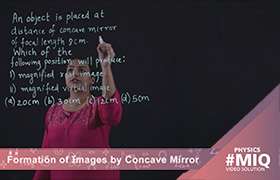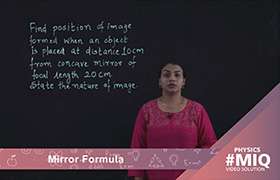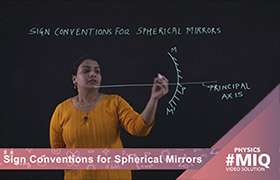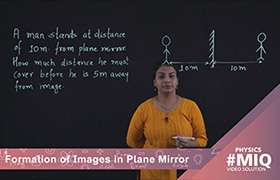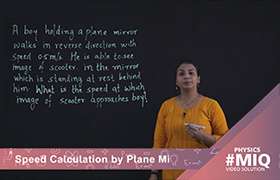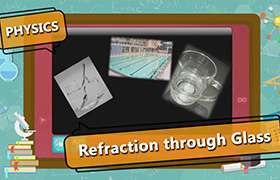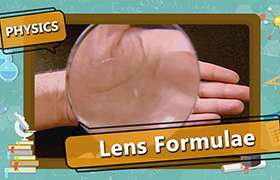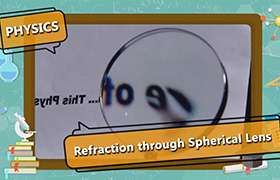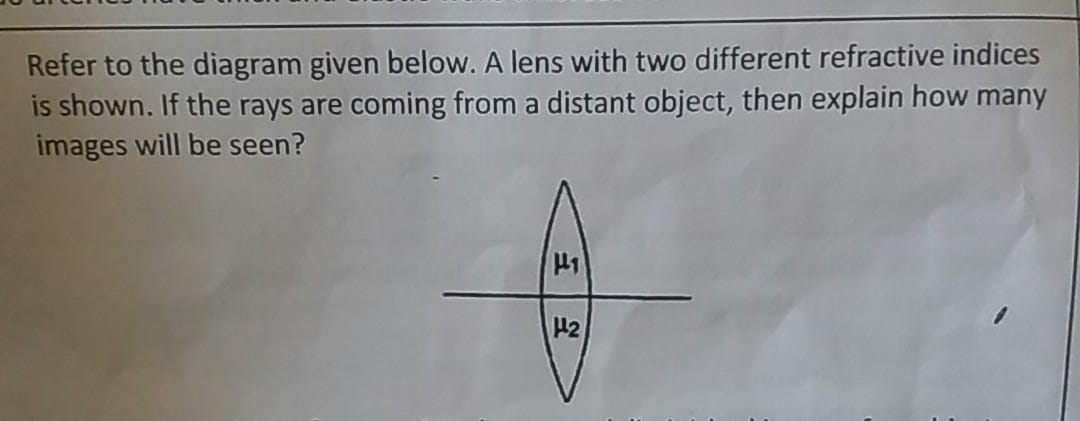CBSE Class 10 Answered
a numerical :lenses
Asked by | 29 Jan, 2009, 10:33: AM
Sorry, for the answer to this question last time. I had mentioned that the image will be virtual, but since the silvered side is concave a real image can be formed.
In this case refraction takes place when light enters the lens, reflection from the curved surface and then refraction when light emerges from the lens.
1/F = 1/f + 1/fm + 1/f = 2/f +1/fm
fm is the focal length of the mirror = R/2.----(1)
f is the focal length of the curved surface which is found using 1/f = (μ-1)(1/R) so f = R/(μ-1)----(2)
Hence effective focal length using 1 and 2 is 1/F = 2/f + 1/fm
F = R/2μ = 30/2(1.5) = 10cm.
So if the object is at 20 cm a real image of the same size as the object is formed.
Answered by | 30 Jan, 2009, 10:50: AM
Application Videos
Concept Videos
CBSE 10 - Physics
Asked by agankitgupta938 | 18 Apr, 2024, 04:29: PM
CBSE 10 - Physics
Asked by infinityupgraded | 13 Apr, 2024, 08:17: AM
CBSE 10 - Physics
Asked by suryamr2019 | 08 Mar, 2024, 04:32: PM
CBSE 10 - Physics
Asked by saurabhjd527 | 30 Jan, 2024, 07:55: PM
CBSE 10 - Physics
Asked by subrasixty | 13 Jan, 2024, 05:05: PM
CBSE 10 - Physics
Asked by nandanagnair | 17 Dec, 2023, 03:44: PM
CBSE 10 - Physics
Asked by namish1088 | 16 Nov, 2023, 08:09: PM
CBSE 10 - Physics
Asked by 0 0 | 19 Oct, 2023, 03:51: PM
CBSE 10 - Physics
Asked by bubbynaik77 | 29 Sep, 2023, 09:34: PM
CBSE 10 - Physics
Asked by gurcharansingh37306 | 10 Sep, 2023, 12:53: PM

